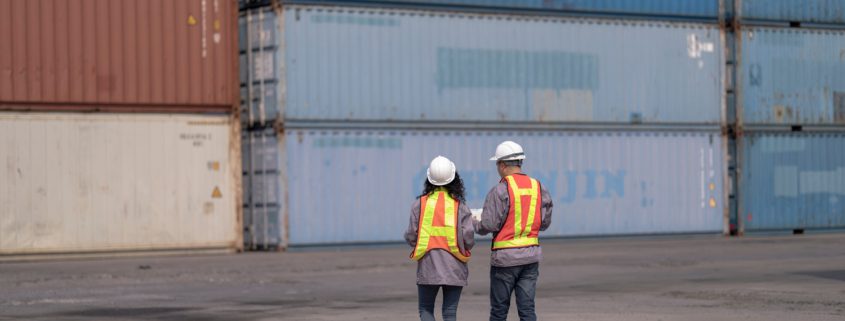Navigating Trade Turbulence: Next-Gen Customs Brokerage for Pharma in 2025
Executive Summary
In 2025, pharmaceutical logistics faces an increasingly complex customs environment. With evolving regulations, shifting tariffs, and heightened enforcement from agencies like U.S. Customs and Border Protection (CBP), efficient, error-free customs clearance has never been more vital. For pharmaceutical shippers—especially those moving high-value, time- or temperature-sensitive goods—delays at borders can mean product loss, compliance violations, or missed patient deliveries. This white paper explores how next-generation customs brokerage practices are transforming pharma supply chains by improving speed, transparency, and compliance through automation, digital tools, and expert-driven support.
The Evolving Customs Landscape in 2025
Pharma shipments are under a microscope. Amid ongoing global trade realignments—including expanded tariff structures, post-pandemic enforcement backlogs, and new regulatory frameworks—CBP and international customs agencies have intensified their scrutiny of imports and exports. Audits and penalties for compliance lapses are rising, and pharma cargo is increasingly flagged for thorough review.
In addition, regulations governing controlled substances, biologics, APIs (active pharmaceutical ingredients), and investigational drugs are tightening. For importers and exporters in the life sciences sector, navigating these regulations requires both legal expertise and logistical agility.
Key Challenges Facing Pharmaceutical Shippers
- Stringent Documentation Requirements: Errors in HS codes, certificates of origin, or FDA documentation can stall critical cargo.
- Port Congestion & Inspection Delays: CBP’s targeting algorithms and random inspections can cause costly delays.
- Limited Visibility: Many companies lack end-to-end transparency between customs clearance and freight movements.
- Risk of Non-Compliance Fines: Even minor documentation mistakes or licensing oversights can trigger financial penalties or cargo seizures.
The Role of Next-Gen Customs Brokerage
Modern customs brokerage firms are leveraging automation, AI, and integrated platforms to manage complexity and reduce risk. Key innovations include:
- AI-Enhanced Document Review: Natural language processing tools can pre-screen documents for missing or incorrect data.
- Automated Tariff Classification Tools: Machine learning algorithms suggest accurate HS codes based on product specs and regulatory data.
- Customs Data Integration: Leading brokers now integrate with a client’s ERP or TMS to streamline entries, flag risk areas, and sync with compliance data.
- Proactive Compliance Monitoring: Real-time dashboards track tariff shifts, restricted party lists, and changing local import/export rules.
Strategic Approaches for Life Sciences Companies
- Partner with a Broker Specializing in Pharma: A generalist customs broker may not understand FDA regulations, cold chain requirements, or DSCSA tracking.
- Digitize and Centralize Documentation: Implement structured digital workflows for certificates, lab results, SDS sheets, and packaging data.
- Leverage Pre-Arrival Review Systems (PARS) and Entry Visibility Tools: Stay ahead of inspections and improve clearance times with advance filings.
- Maintain a Customs Audit Trail: Ensure every shipment has a full compliance history and automated recordkeeping to satisfy audits.
How Euro-American Delivers a Competitive Edge
At Euro-American Worldwide Logistics, our customs brokerage services are purpose-built for the complexities of pharmaceutical and biotech logistics. We provide:
- In-house licensed brokers with specialized knowledge of FDA, USDA, and DEA regulations
- Seamless integration with cGMP storage and transportation services
- Pre-clearance strategies and cross-border planning for expedited delivery
- 24/7 clearance monitoring and real-time visibility tools
- Dedicated support for clinical trial shipments and special permits
Our client partners benefit from reduced delays, proactive risk management, and enhanced compliance—all with the expertise to navigate evolving regulatory demands.
Conclusion
As global trade dynamics continue to shift, life sciences companies must modernize their approach to customs brokerage. By adopting digital-first, pharma-specific strategies and partnering with a knowledgeable, full-service logistics provider like Euro-American, shippers can gain speed, assurance, and control across every customs checkpoint.
References
CBP. (2025). Operational Statistics: Enforcement Actions Q1 2025. U.S. Customs and Border Protection.
FDA. (2024). Importing Human Drugs into the United States. U.S. Food and Drug Administration.
WCO. (2025). Harmonized System Update: Pharmaceuticals and Biologics. World Customs Organization.
Armstrong & Associates. (2025). 3PL Market Report – Regulatory Disruption and Logistics Innovation.
Journal of Commerce. (2025). Pharma Supply Chains Face Audit Surge at U.S. Ports.



